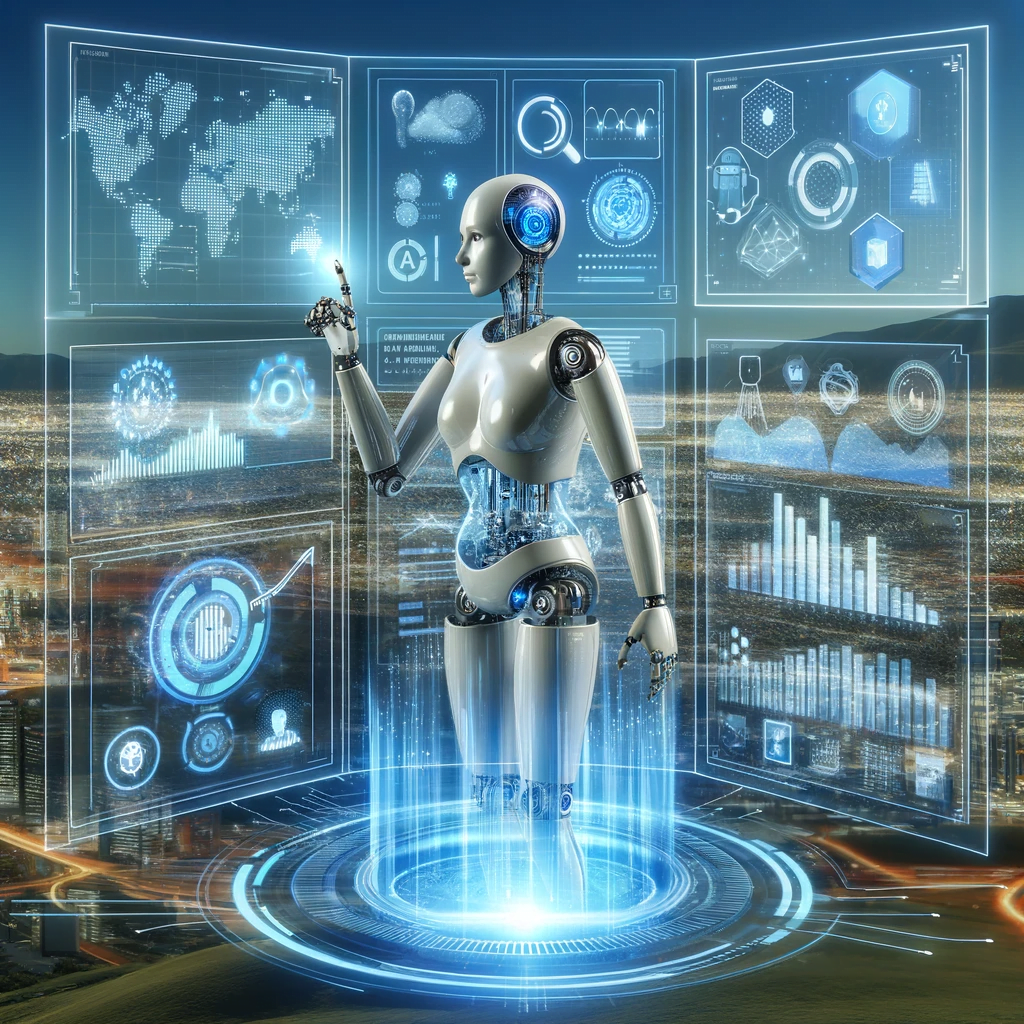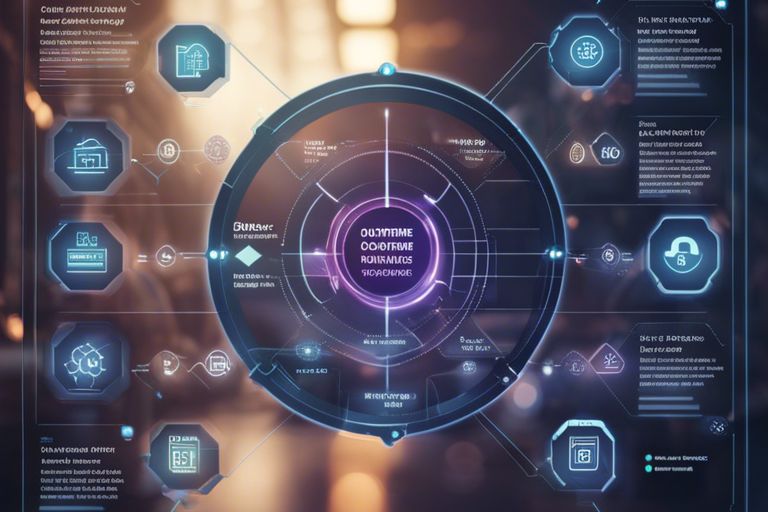Many businesses today are utilizing AI technology to create more effective customer journey maps. This innovative approach allows companies to gain deeper insights into their customers’ behaviors, preferences, and pain points throughout their interaction with the brand. By incorporating artificial intelligence into the customer journey mapping process, organizations can enhance personalization, predict customer needs, and improve overall customer satisfaction. To learn more about the significance of customer journey mapping in AI, check out The Role of Customer Journey Mapping in Conversational AI.

Key Takeaways:
- Customer journey mapping is a powerful tool that helps businesses visualize the complete end-to-end experience of their customers.
- AI technology can enhance customer journey mapping by providing insights through data analysis, predictive modeling, and automation of repetitive tasks.
- Predictive analytics enabled by AI can anticipate customer behavior and preferences, allowing businesses to proactively design personalized experiences along the customer journey.
- AI-driven customer journey mapping can help businesses identify pain points, optimize touchpoints, and ultimately improve overall customer satisfaction and loyalty.
- Integrating AI technologies with customer journey mapping can lead to more efficient processes, better decision-making, and ultimately drive business growth.
The Evolution of Customer Journey Mapping
Assuming you are delving into Customer Journey Mapping using AI, it’s crucial to understand how this practice has evolved over time. Here we examine the traditional methods of customer journey mapping and the role of technology and data analytics in shaping its current landscape.
Traditional Methods of Customer Journey Mapping
On a historical note, traditional customer journey mapping involved manual processes such as surveys, focus groups, and one-on-one interviews. These methods provided valuable insights into customer behavior and preferences, but were often limited in scalability and real-time analysis. With the advent of digital technologies, companies began to explore new ways to track and analyze customer interactions across multiple touchpoints.
- Describe the traditional methods of customer journey mapping.
- What were the limitations of traditional customer journey mapping?
- How did digital technologies impact customer journey mapping?The Role of Technology and Data Analytics
On the other hand, the integration of technology and data analytics revolutionized customer journey mapping. Advanced software solutions and AI algorithms now allow businesses to collect and analyze large volumes of customer data in real time. This shift has enabled companies to create more detailed and accurate customer journey maps, leading to personalized customer experiences and targeted marketing strategies.
- How has technology impacted customer journey mapping?
- What role do data analytics play in modern customer journey mapping?
- Discuss the benefits of using technology in customer journey mapping.Any exploration of the role of technology and data analytics in customer journey mapping must consider the transformative impact these tools have had on the process. Leveraging AI and machine learning algorithms, businesses can now analyze customer behavior at a granular level, identifying patterns and trends that were previously difficult to discern. This enables companies to create highly tailored and efficient customer journey maps, ultimately enhancing overall customer satisfaction and loyalty.
- How has AI revolutionized customer journey mapping?
- Discuss the impact of machine learning on customer journey mapping.
- What benefits do technology and data analytics offer in customer journey mapping?Fundamentals of Artificial Intelligence (AI)
If you’re delving into customer journey mapping with AI, it’s imperative to grasp the fundamentals of Artificial Intelligence. From basic concepts to advanced technologies, understanding AI will pave the way for leveraging its power in enhancing customer experiences. Here are some ChatGPT prompt samples to explore this topic further:
- What are the core principles of Artificial Intelligence?
- Explain the difference between narrow AI and general AI.
- How does machine learning contribute to AI advancements?
- Discuss the ethical implications of AI in customer journey mapping.
Overview and Definition of AI
Fundamentals of Artificial Intelligence lie in its ability to mimic human cognitive functions such as learning and problem-solving. The term ‘Artificial Intelligence’ encompasses a vast field that includes machine learning, natural language processing, computer vision, robotics, and more. Here are some ChatGPT prompt samples to examine deeper into the overview and definition of AI:
- Define Artificial Intelligence and its applications in modern technologies.
- Explore the importance of AI in shaping the future of customer experiences.
- How does AI differ from traditional software algorithms?
- Discuss the key challenges in implementing AI solutions for customer journey mapping.
Key AI Technologies Impacting Customer Journey Mapping
Fundamentals of customer journey mapping with AI involve leveraging key technologies such as machine learning, natural language processing, and predictive analytics. These technologies play a crucial role in capturing, analyzing, and interpreting customer data to improve engagement and drive business growth. Here are some ChatGPT prompt samples to explore the key AI technologies impacting customer journey mapping:
- How does machine learning optimize customer journey mapping processes?
- Explain the role of natural language processing in understanding customer feedback.
- Discuss the impact of predictive analytics on predicting customer behavior.
- Explore the potential of computer vision in enhancing customer experiences.
Definition: Artificial Intelligence technologies play a pivotal role in transforming how businesses understand and optimize customer journeys. From algorithmic predictions to automated decision-making processes, AI empowers organizations to personalize interactions, anticipate needs, and streamline customer touchpoints efficiently.
- How does AI enhance customer journey mapping strategies?
- Discuss real-world examples of AI implementation in improving customer experiences.
- Explore the future trends of AI in revolutionizing customer journey mapping.
- What are the potential risks associated with over-reliance on AI in customer engagement?
Mapping: Customer journey mapping with AI can provide valuable insights that drive strategic decision-making and create personalized experiences. However, it also poses challenges such as data privacy concerns and the need for ethical AI practices. By leveraging the power of AI responsibly, businesses can unlock a wealth of opportunities to cultivate lasting customer relationships.

Integrating AI into Customer Journey Mapping
To successfully integrate AI into customer journey mapping, businesses must first identify key touchpoints where AI can be leveraged to enhance customer experience. AI technologies can help streamline data collection and analysis, provide real-time insights, and personalize interactions with customers. By incorporating AI into customer journey mapping, organizations can gain a deeper understanding of customer behavior, preferences, and pain points, ultimately leading to more effective marketing strategies and improved customer satisfaction.
The Benefits of AI-Enhanced Customer Journey Maps
To fully grasp the benefits of AI-enhanced customer journey maps, businesses can extract valuable insights from various touchpoints along the customer’s path. AI can analyze large volumes of data quickly and accurately, identifying patterns and trends that may not be apparent through traditional methods. By leveraging AI technology, organizations can improve personalization efforts, anticipate customer needs, and enhance overall customer experience.
How AI Transforms Data Collection and Analysis
To stay ahead in today’s competitive landscape, businesses must adopt AI to transform their data collection and analysis processes. AI algorithms can sift through vast amounts of data in real-time, extracting actionable insights and predictive analytics. By utilizing AI-powered tools, companies can streamline operations, identify opportunities for growth, and make data-driven decisions that drive business success.
An important aspect of how AI transforms data collection and analysis is its ability to detect patterns and anomalies within datasets. By automating data processing tasks, AI can help businesses uncover hidden correlations and uncover valuable insights that can inform strategic decisions. However, organizations must also be mindful of the ethical implications surrounding AI-powered data analysis, ensuring that customer data is used responsibly and in compliance with regulations.
Journey mapping with AI can revolutionize how businesses understand and cater to their customers. By harnessing the power of AI technologies, companies can unlock crucial insights and drive personalized interactions at scale. While AI offers significant advantages in data analysis and customer engagement, organizations must also prioritize data privacy and ethical considerations to maintain customer trust and loyalty.
Designing AI-Driven Customer Journey Maps
Now, with the integration of AI into customer journey mapping, businesses can enhance their understanding of customer interactions and behaviors. AI-driven customer journey maps can provide valuable insights into customer preferences, pain points, and opportunities for engagement. To create effective AI-driven customer journey maps, businesses can leverage various AI technologies such as machine learning, natural language processing, and predictive analytics to analyze data, predict customer behavior, and personalize customer experiences.
To design AI-driven customer journey maps, organizations can utilize AI-powered tools and platforms to automate data collection, analysis, and visualization processes. By integrating AI into customer journey mapping, businesses can gain a deeper understanding of customer journeys across multiple touchpoints and channels. With the ability to generate real-time insights, AI-driven customer journey maps enable businesses to optimize customer engagement strategies and personalize interactions at scale.
- AI-powered tools for customer journey mapping
- Using machine learning for customer behavior prediction
- Natural language processing in customer journey analysis
- Leveraging predictive analytics for personalized experiences
Strategies for Data Integration and Insight Generation
Maps organizations can adopt various strategies to improve data integration and generate actionable insights for AI-driven customer journey mapping. By consolidating data from various sources such as CRM systems, social media platforms, and customer feedback channels, businesses can create a unified view of customer interactions. Leveraging AI algorithms, businesses can extract valuable insights from this integrated data to identify trends, patterns, and anomalies that impact the customer journey.
Implementing advanced analytics techniques such as clustering, regression analysis, and propensity modeling can help businesses derive meaningful insights from customer data. By integrating AI-driven analytics tools into the customer journey mapping process, organizations can unlock hidden patterns in data and gain a holistic view of customer behavior. These insights enable businesses to tailor their marketing strategies, messaging, and offerings to meet individual customer needs and preferences.
- Integrating data from multiple sources for customer journey mapping
- Using AI algorithms for data analysis and insight generation
- Advanced analytics techniques for customer behavior analysis
- Tailoring marketing strategies based on AI-driven insights
Personalization and Segmenting Customer Personas with AI
Maps organizations can leverage AI to personalize customer experiences and segment customer personas effectively. AI algorithms can analyze customer data in real-time to create personalized recommendations, content, and offers for individual customers. By segmenting customers based on their behaviors, preferences, and demographics, businesses can deliver targeted messages and promotions that resonate with specific customer segments.
AI-powered customer personas enable organizations to understand their customers on a deeper level and tailor interactions to meet their unique needs. By segmenting customers into distinct personas, businesses can create personalized customer journey maps that cater to different customer segments. This personalized approach allows businesses to deliver relevant and timely content to customers, increasing engagement and driving conversions.
- Personalizing customer experiences with AI algorithms
- Segmenting customers based on behaviors and preferences
- Creating targeted messages and promotions with AI-driven personas
- Tailoring customer journey maps for different customer segments
Any organization looking to enhance their customer journey mapping process can benefit from incorporating AI technologies for personalization and segmenting customer personas. By leveraging AI algorithms, businesses can gain valuable insights into customer behaviors, preferences, and needs, enabling them to create more targeted and engaging customer experiences. AI-driven customer journey maps empower businesses to deliver personalized interactions at scale, driving customer satisfaction and loyalty.
- Using AI to understand customer needs and preferences
- Personalizing interactions for improved customer satisfaction
- Enhancing customer loyalty through AI-driven personalization
- Tailoring customer experiences for different customer personas
A successful implementation of AI-driven customer journey mapping requires a strategic approach to data integration, insight generation, and personalization. By harnessing the power of AI technologies, businesses can transform their customer journey mapping processes and deliver exceptional customer experiences. It is imperative for organizations to embrace AI-driven strategies to stay competitive in the age of digital transformation.
Operationalizing AI-Based Customer Insights
Once again, organizations are realizing the value of leveraging AI to derive actionable insights from their customer data. To effectively operationalize these AI-based insights, businesses need to integrate them into their existing systems and processes. This integration involves adapting business processes to leverage the power of AI, enabling real-time adaptation and predictive analytics in customer journeys.
Adapting Business Processes to Leverage AI Insights
On the journey of incorporating AI-based customer insights, adapting business processes is crucial. It involves reevaluating existing workflows and structures to ensure that AI-generated insights are seamlessly integrated into decision-making processes. By aligning organizational goals with AI recommendations, businesses can enhance customer satisfaction, optimize operations, and drive growth. Prompting the AI with questions such as:
1. How can businesses modify their processes to make the most of AI-generated insights?
2. What are the key steps involved in adapting business processes to leverage AI insights?
3. How can organizations ensure that AI recommendations align with their strategic objectives?
Real-time Adaptation and Predictive Analytics in Customer Journeys
On the path to real-time adaptation and predictive analytics in customer journeys, businesses can harness the power of AI to anticipate customer needs and personalize interactions. By leveraging predictive analytics, organizations can proactively address customer concerns, offer tailored solutions, and enhance overall engagement. Prompting the AI with questions like:
1. What role does real-time adaptation play in enhancing the customer journey experience?
2. How can businesses leverage predictive analytics to anticipate customer behavior?
3. What are the benefits of incorporating real-time adaptation and predictive analytics into customer journeys?
Processes play a vital role in enabling real-time adaptation and predictive analytics in customer journeys by facilitating seamless integration of AI insights into operational workflows. By aligning AI-generated recommendations with business objectives, organizations can unlock the full potential of AI in delivering personalized customer experiences, optimizing decision-making processes, and driving business growth.
Insights
Within operationalizing AI-based customer insights, the ability to adapt business processes and incorporate real-time adaptation and predictive analytics is crucial. By embracing these advancements, organizations can stay ahead of the curve in understanding and meeting customer needs. The integration of AI insights into decision-making processes not only improves operational efficiency but also enhances customer satisfaction and drives competitive advantage. It is imperative for businesses to continuously evolve and leverage AI technologies to gain critical insights that propel them towards success in today’s dynamic market landscape.
Challenges and Considerations in AI-Powered Customer Journey Mapping
1. How does AI impact data privacy in customer journey mapping?
2. What are the ethical considerations of using AI in understanding customer journeys?
3. Can AI help businesses navigate legal constraints in customer data analysis?
4. Ways to ensure transparency and accountability in AI-powered customer journey mapping.
Data Privacy and Ethical Considerations
1. How can businesses protect customer data while using AI for journey mapping?
2. What ethical frameworks should companies follow when employing AI in understanding customer behavior?
3. Ensuring GDPR compliance when utilizing AI for customer journey analysis.
4. Balancing personalized customer experiences with data privacy concerns in AI-powered journey mapping.
Data privacy and ethical considerations play a crucial role in AI-powered customer journey mapping. As businesses leverage AI to understand customer behaviors and preferences, they must grapple with the responsibility of protecting sensitive data and adhering to ethical standards. This includes ensuring compliance with regulations such as GDPR and implementing transparency in data collection and usage to build and maintain customer trust.
Overcoming Technical and Organizational Barriers
1. What technical challenges do companies face when implementing AI in customer journey mapping?
2. How can organizations overcome resistance to AI adoption for understanding customer experiences?
3. Strategies to integrate AI tools seamlessly into existing customer journey mapping processes.
4. Overcoming data silos and organizational barriers to optimize AI-driven customer journey insights.
With the increasing reliance on AI for customer journey mapping, organizations must address various technical and organizational barriers that may impede successful implementation. Technical challenges such as data integration, algorithm accuracy, and system interoperability need to be overcome to harness the full potential of AI in gaining valuable insights into customer interactions. Moreover, organizational resistance to change and lack of expertise in AI technologies can pose significant hurdles that companies need to address through proper training and change management strategies.
Customer journey mapping with AI offers unprecedented opportunities for businesses to understand and engage with their customers more effectively. While the technology provides valuable insights and automation capabilities, it also brings challenges related to data privacy, ethical considerations, technical hurdles, and organizational barriers. By navigating these challenges thoughtfully, companies can leverage AI to enhance customer experiences and drive growth sustainably.
Future of Customer Journey Mapping and AI
After exploring the current landscape of customer journey mapping and AI, it’s crucial to look ahead at what the future holds for this dynamic intersection. As technology continues to advance at a rapid pace, the role of AI in enhancing customer journey mapping is expected to evolve significantly. Here are some key areas to watch out for in the future:
- How can AI personalize customer journey mapping on a larger scale?
- What are the potential ethical implications of using AI in customer journey mapping?
- In what ways can AI be integrated seamlessly into existing customer experience strategies?
- What new technologies or advancements in AI will shape the future of customer journey mapping?
Emerging Trends and Innovations in AI and Customer Journey Mapping
- How are AI tools assisting in predicting customer behavior along the journey?
- What are the emerging AI techniques improving customer journey analysis?
- How can AI help in automating the process of mapping customer journeys?
- In what ways is machine learning revolutionizing customer journey mapping practices?
Emerging technologies in AI and customer journey mapping are paving the way for more sophisticated and insightful analysis. Organizations are increasingly leveraging AI to gain deeper insights into customer behavior patterns, predict future interactions, and personalize experiences in real-time. As AI continues to mature, it is expected to streamline the process of mapping customer journeys, making it more efficient and accurate than ever before.
Preparing for the Next Wave: AI and Customer Experience
- How can businesses prepare for the increased integration of AI in customer experience?
- What are the potential challenges of relying heavily on AI for customer journey mapping?
- How can organizations ensure a balance between human touch and AI in customer interactions?
- What skills will be valuable in a future where AI plays a significant role in customer experience?
Next, as businesses gear up for the next wave of AI in customer experience, it is crucial to strike a balance between the benefits of automation and the importance of human touch in customer interactions. Organizations need to prepare their teams for a future where AI will play an integral role in shaping customer journeys. By investing in the right skills and technologies, businesses can stay ahead of the curve and deliver exceptional customer experiences that blend the best of both worlds – AI-driven insights and human empathy.
For instance, organizations that successfully navigate the integration of AI in customer journey mapping stand to gain a competitive edge in understanding their customers’ needs and preferences. By harnessing the power of AI to analyze vast amounts of data in real-time, businesses can personalize interactions, anticipate customer needs, and enhance overall satisfaction. However, it’s crucial to be mindful of the ethical considerations surrounding AI usage, ensuring that the technology is wielded responsibly and transparently to build trust with customers.
Final Words
Presently, customer journey mapping with AI offers businesses a powerful tool to gain insights into customer behavior, preferences, and pain points. By leveraging AI technologies, companies can create personalized and seamless experiences for their customers, leading to increased satisfaction and loyalty. It also enables businesses to proactively identify areas for improvement and optimize their processes to drive better outcomes.
In the final analysis, integrating AI into customer journey mapping can significantly enhance a company’s understanding of its customers and drive strategic decision-making. As the technology continues to evolve, businesses that embrace AI-driven customer journey mapping will be better positioned to stay competitive in an increasingly digital world.
FAQ
Q: What is Customer Journey Mapping with AI?
A: Customer Journey Mapping with AI is a process of using artificial intelligence technologies to analyze and optimize the path a customer takes when interacting with a business, from initial contact to conversion and beyond.
Q: Why is Customer Journey Mapping important?
A: Customer Journey Mapping is important as it helps businesses understand their customers’ experiences, pain points, and preferences at each touchpoint, enabling them to personalize interactions, improve customer satisfaction, and increase loyalty.
Q: How does AI enhance Customer Journey Mapping?
A: AI enhances Customer Journey Mapping by collecting and analyzing large volumes of customer data in real-time, identifying patterns and trends that humans might miss, predicting customer behavior, and enabling automated responses for personalized engagement.
Q: What are the benefits of using AI for Customer Journey Mapping?
A: The benefits of using AI for Customer Journey Mapping include improved customer segmentation, personalized messaging, more accurate predictions, reduced response times, increased efficiency, and ultimately, higher conversion rates and customer satisfaction.
Q: How can businesses implement Customer Journey Mapping with AI?
A: To implement Customer Journey Mapping with AI, businesses should first define their customer touchpoints, collect relevant data, choose the right AI tools or platforms, analyze the data to gain insights, create personalized strategies based on the findings, and continuously evaluate and refine the customer journey for optimal results.
















